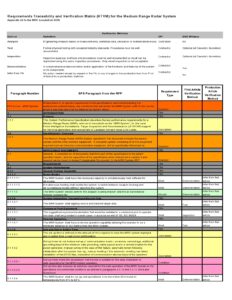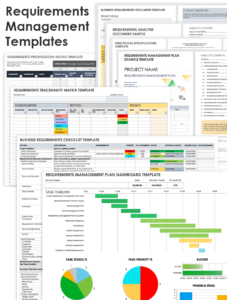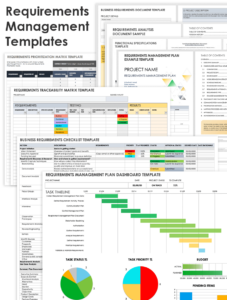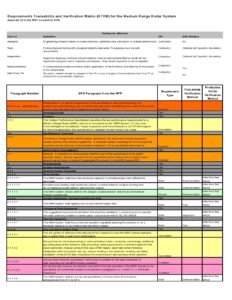A sample requirement traceability matrix (RTM) template is a tool that helps you track the relationships between requirements, design elements, and test cases. It can be used to ensure that all requirements are met and that the system is built to meet the needs of the stakeholders.
RTMs are typically used in software development projects, but they can also be used in other industries, such as engineering and manufacturing. They can help to improve communication between stakeholders, reduce defects, and ensure that the project is completed on time and within budget. RTMs are usually created in a spreadsheet format, but there are also many software tools available that can help you create and manage them.
What is a Requirement Traceability Matrix?
A requirement traceability matrix (RTM) is a document that maps requirements to other project artifacts, such as design elements, test cases, and source code. It provides a way to track the progress of requirements and ensure that all requirements are met.
RTMs are typically created in a spreadsheet format, but there are also many software tools available that can help you create and manage them. RTMs can be used in any industry, but they are most commonly used in software development projects.
There are many benefits to using RTMs, including:
- Improved communication between stakeholders
- Reduced defects
- Improved project planning and tracking
- Ensured that the project is completed on time and within budget
How to Create a Requirement Traceability Matrix
Creating an RTM is a straightforward process. The first step is to identify all of the requirements for the project. This can be done by reviewing the project scope statement, requirements documents, and other project artifacts.
Once you have identified all of the requirements, you need to create a spreadsheet or use a software tool to create an RTM. The RTM should include the following columns:
- Requirement ID
- Requirement Description
- Design Element Traceability
- Test Case Traceability
- Source Code Traceability
- Status
You can then populate the RTM with the appropriate information. The Requirement ID column should contain the unique identifier for each requirement. The Requirement Description column should contain a brief description of each requirement. The Design Element Traceability column should contain the references to the design elements that implement the requirement.
The Test Case Traceability column should contain the references to the test cases that verify the requirement. The Source Code Traceability column should contain the references to the source code that implements the requirement. The Status column should contain the current status of the requirement.
Benefits of Using a Requirement Traceability Matrix
There are many benefits to using a requirement traceability matrix (RTM). RTMs can help you to:
- Improve communication between stakeholders
- Reduce defects
- Improve project planning and tracking
- Ensure that the project is completed on time and within budget
RTMs are a valuable tool for any project manager. They can help you to ensure that all requirements are met and that the project is successful.
Conclusion
RTMs are an essential tool for any project manager. They can help you to improve communication between stakeholders, reduce defects, and ensure that the project is completed on time and within budget.
If you are not already using RTMs, I encourage you to start using them today. You will be glad you did.



